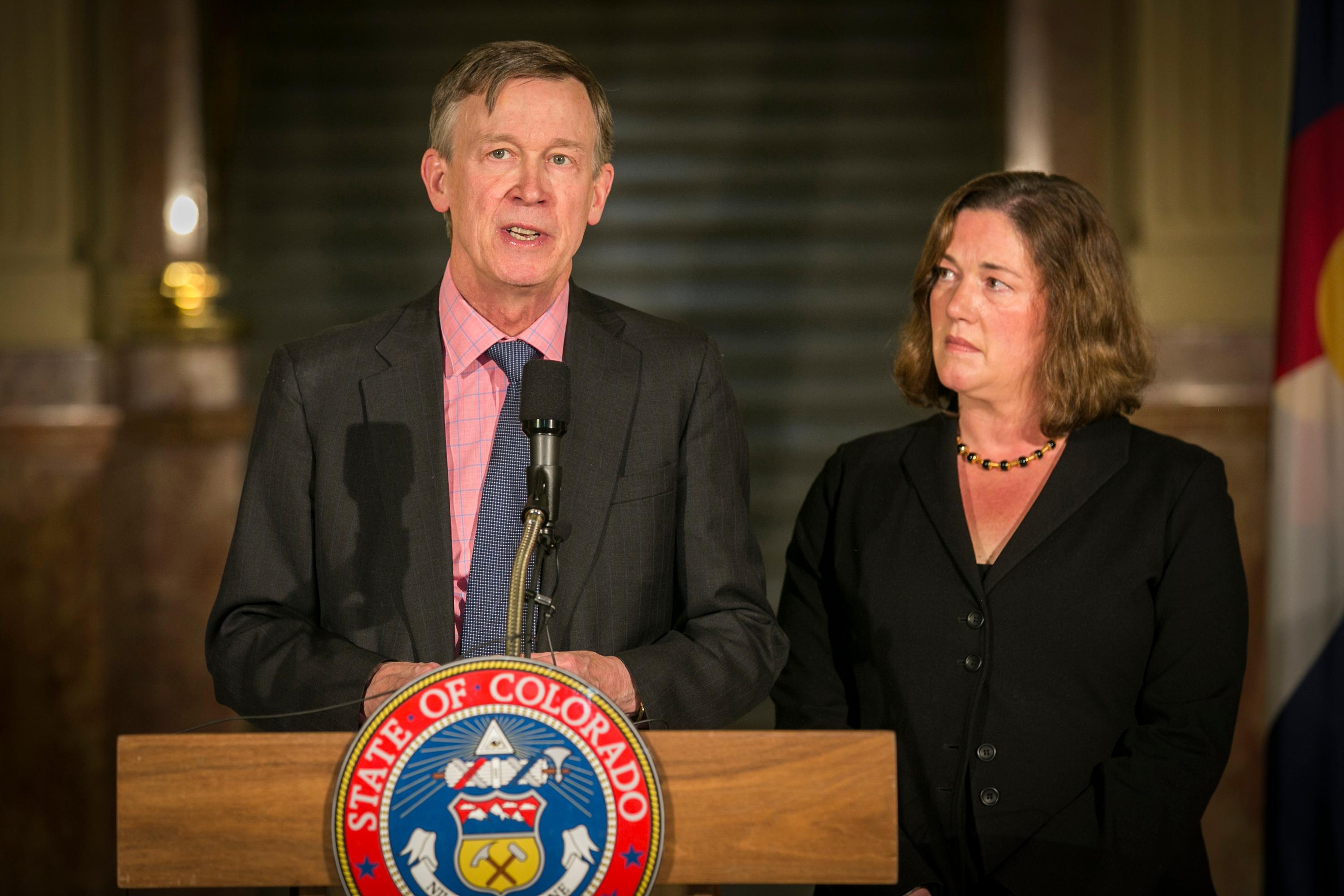
When the Senate or House passes a budget and when the president signs that budget into law, press releases from members touting what they got for their district or the state quickly follow.
So when freshman Rep. Lauren Boebert sent out a newsletter and a release last week touting her “wins” for Colorado that were included in the $1.5 trillion government funding bill, it caught my eye.
First, it arrived about a week after the bill was signed into law and two weeks after the House passed the legislation. Second, she didn’t actually vote for the appropriations measures on the House floor.
Still, as the appropriations process kicked off on Monday with President Joe Biden’s budget request, Boebert’s newsletter brag is a good vehicle for explaining the process and the role she and other Colorado lawmakers play in getting funding for their priorities.
It starts with the president’s budget request
The president’s request is usually submitted on the first Monday of February for the fiscal year starting on Oct. 1, but Congress can give the president an extension. The bill usually never gets a vote in Congress.
When Congress sees the president’s request, their first response is often “meh,” said Mark Harkins, a senior fellow at Georgetown University’s Government Affairs Institute. He spent almost two decades working on Capitol Hill, including for a Democratic member serving on the Appropriations committee. Despite the congressional ambivalence, “Approximately 85 percent of what's in the president’s budget request ends up in the final appropriation bills,” Harkins said.
Whether the president’s bill is dead on arrival or not, the Senate and House have to agree on a topline number for the budget, which can take awhile. It can happen in two ways: a budget resolution or a deeming resolution. Once agreement is reached on the amount, members and staff get started writing the 12 appropriations bills that make up the discretionary spending.
The appropriations committee in each chamber writes its own bills, subcommittees hold hearings and vote to pass legislation through the committee and the chambers send it to a vote on the floor. After that, leaders of the House and Senate appropriations committees meet to iron out their differences. Both chambers then vote on the compromise government funding bill and send it to the president.
Members then make their own spending requests
While all that is happening, members are making their own requests for what they want to see in the bills. There are two ways they can go about this. The first is through the appropriations process, which can be opaque.
Over the next couple of months, lawmakers can take several different steps to highlight their priorities to the appropriations committee. It could be a letter, which may or may not be made public, requesting funding for a program. It could come during public committee hearings where members question agency leaders about budget priorities and emphasize their own. Or it could be done quietly, via a website (what the House does). And it could be talking to members of the appropriations committee one-on-one.
Harkins said lawmakers make thousands of requests, and not all are honored. As he noted, appropriators see which priorities can be included and what can be cut to the point that both the Senate and House have majorities that can pass the spending bills. He said that’s when members are asked to narrow down their priorities.
“It’s usually in follow-up that we don’t see,” he said. ”That could be a note from the member to the subcommittee chairman that's passed during a vote on the house floor.”
Usually, that’s what you see touted by lawmakers in press releases. While it sounds like they did it on their own, often, it is a group effort.
For example, Boebert mentioned securing full funding for the Payment in Lieu of Taxes program, which is important for rural communities, as one of her wins. She wrote a letter requesting full funding for the program she publicized last year.
She was not the only one. Sen. Michael Bennet led a letter with a bipartisan group of more than 30 other senators. It was a priority for both he and Boebert and many others who represent rural areas with public lands.
Then there are some issues that come as a surprise.
Boebert highlighted funding for the Space Launch System and the Orion Multi-Purpose Crew Vehicle and Exploration Ground System. She doesn’t talk much about NASA compared to other issues like sage grouse or bark beetles. This space program is one that many members of Congress, including the Colorado delegation, support and usually sign onto a letter alongside hundreds of other members.
And Boebert wasn’t the only Colorado congressperson to highlight NASA spending. Sen. John Hickenlooper also listed funding for NASA under his priorities. He put it under the Artemis program, which includes what Boebert highlighted.
Members want funding for personal projects, caucus priorities and policies Congress agrees on
There are some projects and causes specific to a state that individual members have long advocated for that also get funded. Rep. Ed Perlmutter, Hickenlooper and Bennet were able to get the Denver metro’s Regional Transportation District a $20 million down payment from the U.S. Department of Transportation as one of their funded priorities.
Lawmakers can also claim priorities that are not just important to them but to a caucus they represent. The Hyde Amendment rider, which bars the use of federal money to pay for abortions, was important to Republicans in the House and the Senate and was also listed as a Boebert priority in her March 24 press release.
There are also funding priorities shared by most of Congress, including aid to Ukraine and a 2.7 percent pay raise for service members. These showed up as individual priorities for many members, including Bennet and Hickenlooper.
Overall, Harkins with Georgetown University’s Government Affairs Institute said there’s a limit on what a single House member can do on their own since the chamber is one where majority rules. The Senate, where you need 60 votes, is a different story.
“I think the single member really pushing for something is a more likely occurrence in the Senate, where individual senators have the ability to bollocks up the process,” Harkins explained. “In the Senate, any single member can cause discomfort to a lot of folks. And so I think in the Senate that a single member really caring about an issue could give it more weight.”
Don’t forget about earmarks
The second way lawmakers can get funding for priorities is through member-directed projects, known officially as community funding projects — but better known as earmarks. Congress brought them back last year and plans to use them again as they work on the Fiscal year 23 budget.
Congress eliminated earmarks in 2011 over concerns about government spending and possible corruption. Since then, the question has remained: Who knows best how money should be spent in their community? The elected representative or a bureaucrat in Washington, D.C. A House committee examining the modernization of Congress also called for community funding projects to return.
Congressional leaders have tried to make earmarks as transparent as possible. Lawmakers were limited in how many requests they could make, they had to publicly list which projects they were supporting, provide letters of support and prove no one in their family would benefit.
When earmarks were restored, Colorado Democrats took advantage, while Colorado Republicans did not. Democratic members of the congressional delegation highlighted the projects — and the millions of dollars — they were helping bring home to their districts.
And as Harkins points out, earmarks can be one public metric people can use to evaluate how effective and successful their lawmaker is in advocating for their community or state.
“Because now you know everything they ask for, you know, everything they got, you can start to do analysis of who does this well and who doesn't. And that's gonna be fascinating,” he said.
For example, while Reps. Diana DeGette, Neguse and Perlmutter each had all 10 of their funding requests accepted, and Rep. Jason Crow got nine out of 10 of his approved.
While Colorado Republicans did not use earmarks, Rep. Boebert in August put out a release touting her wins in the House version of the appropriations bill that you can compare with the release she sent out last week. Her press release added in the inclusion of anti-abortion measures and keeping the sage grouse from being listed as an endangered species but no longer mentioned funding for Water Conservation and Delivery for the U.S. Bureau of Reclamation.
Taking credit while not voting
In the end, all the Democrats ended up voting for the appropriations legislation that had their priorities in it.
GOP Rep. Doug Lamborn split his government spending vote. He voted for the appropriations bills that included Defense spending, as did a bulk of the Republican conference, and he took credit for that in a statement.
“The defense and national security portions of the bill included a 2.7 percent pay raise for our men and women in uniform, countered Chinese and Russian aggression, continued funding for Iron Dome, and provided critical military, economic, and humanitarian assistance to Ukraine.”
Lamborn also voted “no” on the non-defense spending portions and explained that, too. “ I could not in good conscience support the bloated domestic spending portions of the bill that spends money we do not have on things we do not need.”
GOP Rep. Ken Buck did not vote for either, sending out a statement explaining his “no” vote.
Boebert also did not vote for any of the appropriations bills and was quick on Twitter to criticize the bills before and after the vote.
But in the recent release touting her priorities that were funded by the appropriations bills, she said, “Without selling my soul and my votes through the corrupt earmark process, we were able to get lots of great things done and into federal statute through the normal appropriations process.”
I asked Boebert’s office how she could take credit for funding programs enacted into law while also voting against them. Her office said Boebert “was instrumental in getting these nine things into the bill which was signed into law.” The office pointed to a letter from the Ranking Republican that outlined which of her priorities were included, a letter that was sent to most members of the Republican conference telling them which of their priorities made it into the final bills.
This reminds me of a person who says they support a political candidate, doesn’t vote for them, and still takes credit for the politicians’ win.
Harkins with Georgetown University’s Government Affairs Institute isn’t surprised by this. He thinks politicians should feel comfortable taking credit for bringing some stuff back home, even if they don’t vote for the overall bills because they object to other elements within it.
“Is it fair? Not necessarily. But you know, politicians are gonna take credit,” he said.









